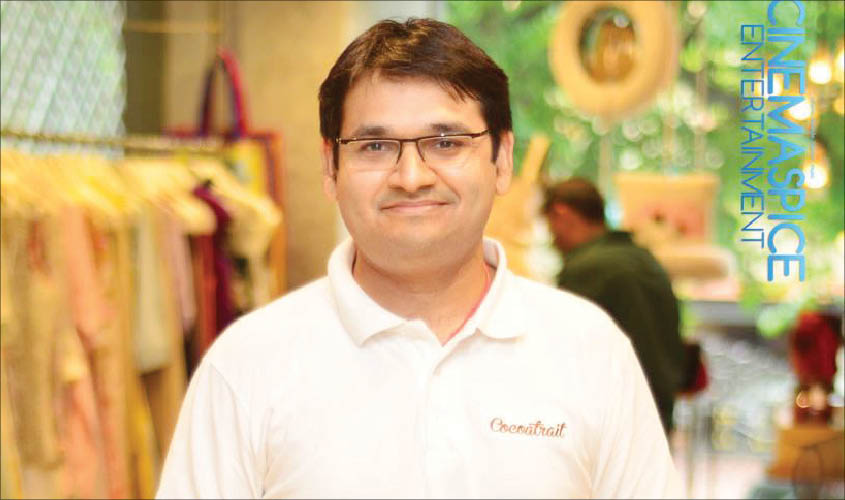The craft chocolate industry is witnessing a revolution in our country. With more and more people opening up to the idea of consuming chocolates in various forms, the market clearly needs an upgrade in terms of quality bean-to-bar production.
Cocoatrait, an initiative by L. Nitin Chordia, India’s first certified chocolate and cacao taster, hosted Asia’s first Level 1 and 2 Foundation Award in chocolate-tasting from 22-25 June in Chennai. The event was aimed at promoting fine flavoured cocoa beans and bean-to-bar chocolates in India. About this initiative, Chordia told Guardian 20, “Cocoatrait educates consumers about fine flavoured cocoa and assists retailers in understanding what products to stock. It is a one-stop shop that caters to all needs for a bean-to-bar maker starting from sourcing of raw materials to equipment, process setup, recipe development, marketing for bean-to-bar/craft chocolates In India.”
Cocoatrait has collaborated with the International Institute of Chocolate and Cacao Tasting (IICCT), London, which offers chocolate-tasting certification in seven countries, including the USA, United Kingdom, Italy, Hong Kong, Taiwan, the Netherlands and Denmark. The organisation is trying to formalise chocolate-tasting education here and to establish India on the global fine-flavour map.
On associating with Cocoatrait, Martin Christy, the founder of IICCT, said, “The certification programme successfully brings together professionals to a higher level of understanding of cacao and fine chocolate. We are pleased to partner with Cocoatrait to bring this education platform for the benefit of the enthusiastic and enterprising Indian audience. This effort is a giant step forward in bringing India at par with what is currently occurring globally and we look forward to returning to India in August 2019.”
On the importance of hosting such a programme in India, Chordia said, “The main goal of the certification programme is to help chocolate makers to predict and develop better products by understanding and having sight of the final desired product. We also strive to provide access to world-class education during the forming stages of this very nascent fine chocolate industry in India and ensure that lack of awareness is not a reason for India to lose out in the fine chocolates movement.”
About the event, he said, “Level 1 saw the presence of a group that included micro-batch chocolate makers, chocolatiers, industry sector professionals, academicians, food technology professionals, future chocolatiers and enthusiasts from across the country. Chocolate is more complex than wine. I believe that if a chocolate-maker understands the nuances of chocolate in greater detail it gives them a sight of the end goal.”
A certified chocolate taster is responsible for providing an unbiased opinion on chocolates. The taster has to be thorough in tasting the product in order to identify defects and the underlying reasons, along with the positives. Moreover, the taster has to identify the flaws in the chocolates and has to give recommendations on how to improve them.

What are the factors involved in chocolate-tasting? Chordia gave some important pointers: “Never taste cold chocolate, your palate should be clean, i.e. it should not contain residual flavours from a previous intake. Break a moderate piece, 4-5g should be a good starting point, hold the chocolate between the thumb and forefinger for 10-15 seconds, smell the chocolate as the aroma is an important component, place the chocolate on the tongue and allow it to melt slowly and take notice of the flavours evolving during
As for the potential of the craft chocolate industry in India, he said, “The 2018 Indian bean-to-bar or craft chocolate market is estimated to be 200,000 chocolate bars annually, amounting to Rs 3 crores in sales [as per Cocoatrait’s estimates and market research]. This is estimated to grow at a 100% rate annually and there will be about 40-plus bean-to-bar/craft chocolate makers in India by the end of 2019. The chocolate making industry’s market size is expected to increase to Rs 165 crores by 2022.”
Chocolate has never been a part of the Indian cuisine, but now it is being embraced as a preferred ingredient all over. If India seeks to be a part of the new world of craft chocolate, it has to develop a better understanding of the art of chocolate-making. Chordia, who has traced the evolution of the chocolate industry, said, “Over the last decade, the highest growth area in the chocolate industry globally has been a shift from mass market commercial chocolates to offering high quality premium craft chocolates where both makers and consumers are looking at extracting the best flavour out of the cocoa beans naturally, and not adding extra flavours. Talking about the fine chocolate industry, the ability to produce chocolates in small batches has led to innovation and greater control over the process and the final output. We see a clear shift from using artificial flavours/oils to presenting more naturally occurring flavours from the cocoa beans. The chocolatiers who use artificial flavours are unable to differentiate and hence are gearing up to the reality via our tasting certifications and bean-to-bar chocolate-making class. This is the current trend.”
Chordia also operates Asia’s premier training institute for chocolate-makers, Cocoashala, in Chennai, which trains international and local participants, as well as the farmers in bean-to-bar chocolate making using fine flavoured cacao. As for the future of the industry, he concluded, “The future is bright. We are already seeing a quick and sure turnaround in the industry. In India, we shall see chocolates from specific cacao regions and estates being used to make and market chocolates. Further, we shall see the use of specific varieties of cacao being used to differentiate the experiences, lesser use of artificial flavours or additives in fine chocolates and the use of recyclable and sustainable packaging will be more emphasised rather than glamourous packaging designs which is the current norm. Consumers are expected to become more knowledgeable and demanding, hence chocolate-makers would need to be on their toes to remain relevant. This would lead to constant innovation and product enhancement, much like wine and coffee, one can say.”

